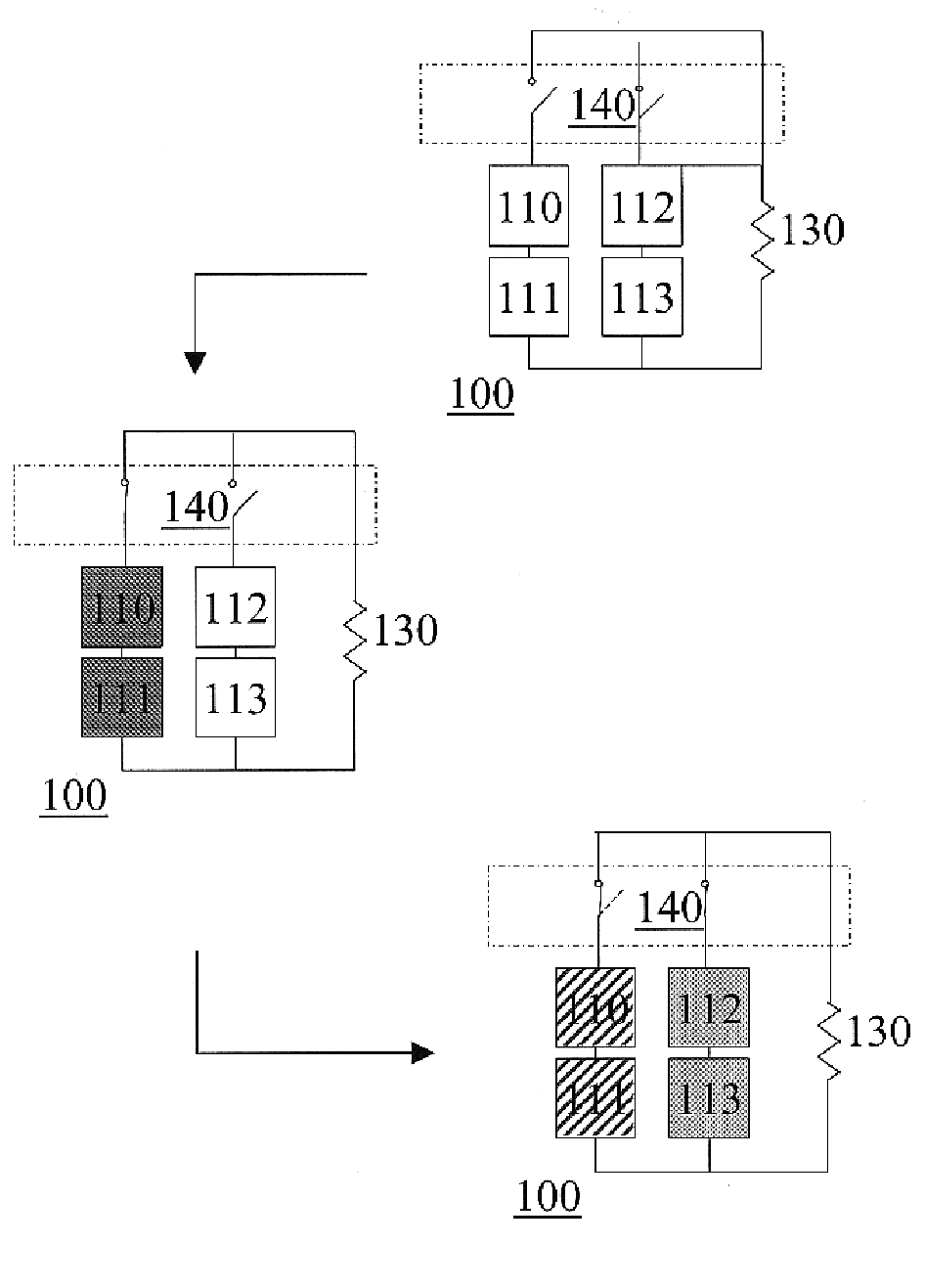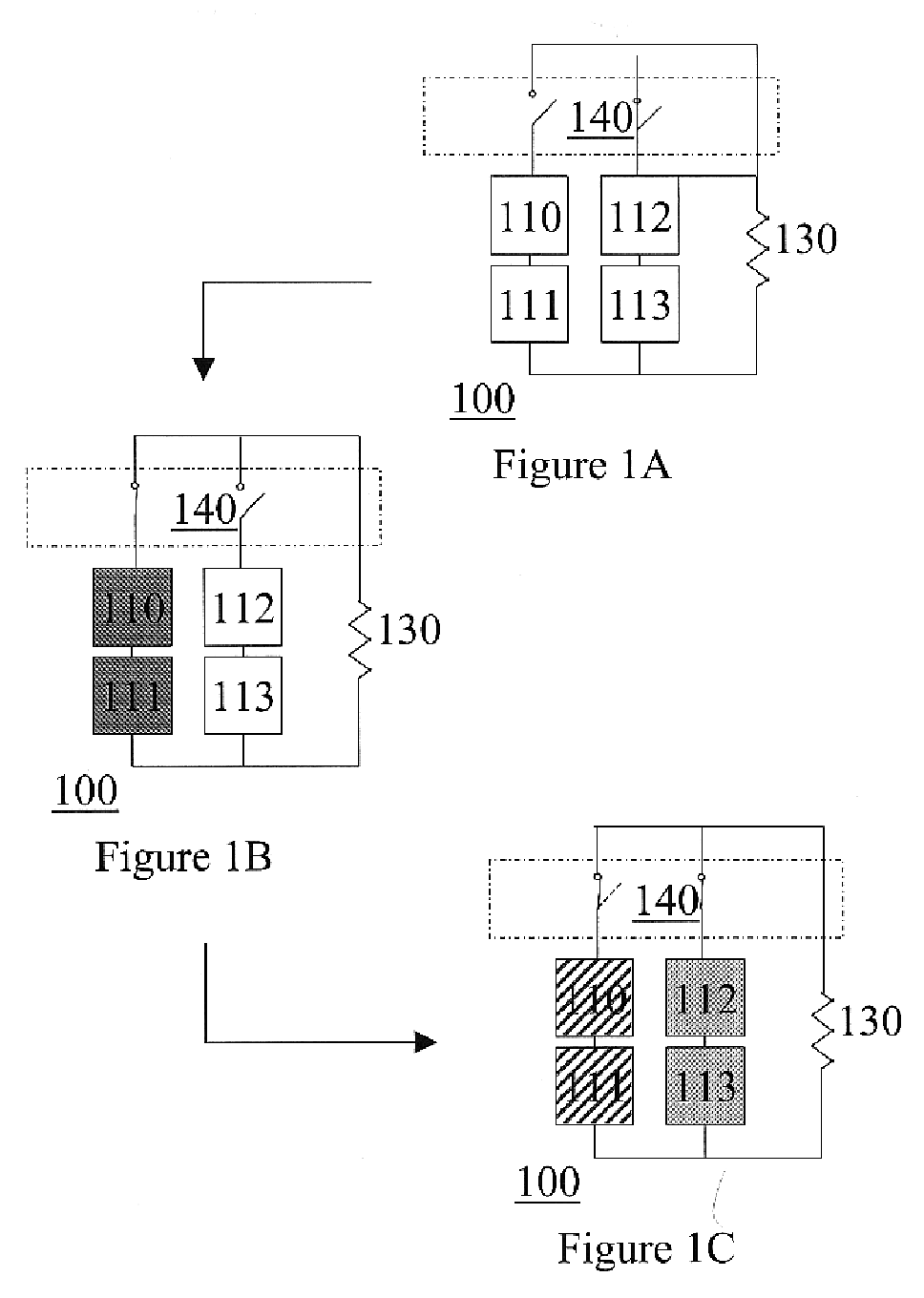Selectively activated electrochemical cell system
a cell system and electrochemical technology, applied in sequential battery discharge, transportation and packaging, and battery arrangement for several simultaneous batteries, etc., can solve the problems of limited interruptibility of conventional batteries, insufficient recharging, and difficult combination of high power and high energy
- Summary
- Abstract
- Description
- Claims
- Application Information
AI Technical Summary
Benefits of technology
Problems solved by technology
Method used
Image
Examples
Embodiment Construction
Referring now to FIGS. 1A-1C, a selectively activated electrochemical cell system 100 is schematically depicted in operation. The system 100 is selectively coupled to an electrical load 130. The system 100 comprises a plurality of electrochemical cells 110-113 arranged in a pair of strings (cells 110 and 111 in series, and cells 112 and 113 in series). A controller 140 is provided to selectively activate one or more of the strings. Note that the controller 140 may comprise a computer operably coupled to switches associated with each cell or a group of cells, a manually operated control coupled to switches associated with each cell or a group of cells (which are switched by a user as needed), or a combination thereof.
The type of battery may be primary or secondary (i.e., rechargeable), or a combination of primary and secondary batteries. The cells 110-113 may be the same or different. Types of batteries include, but are not limited to, alkaline, lead-acid, nickel cadmium, metal air, ...
PUM
 Login to View More
Login to View More Abstract
Description
Claims
Application Information
 Login to View More
Login to View More - R&D
- Intellectual Property
- Life Sciences
- Materials
- Tech Scout
- Unparalleled Data Quality
- Higher Quality Content
- 60% Fewer Hallucinations
Browse by: Latest US Patents, China's latest patents, Technical Efficacy Thesaurus, Application Domain, Technology Topic, Popular Technical Reports.
© 2025 PatSnap. All rights reserved.Legal|Privacy policy|Modern Slavery Act Transparency Statement|Sitemap|About US| Contact US: help@patsnap.com



